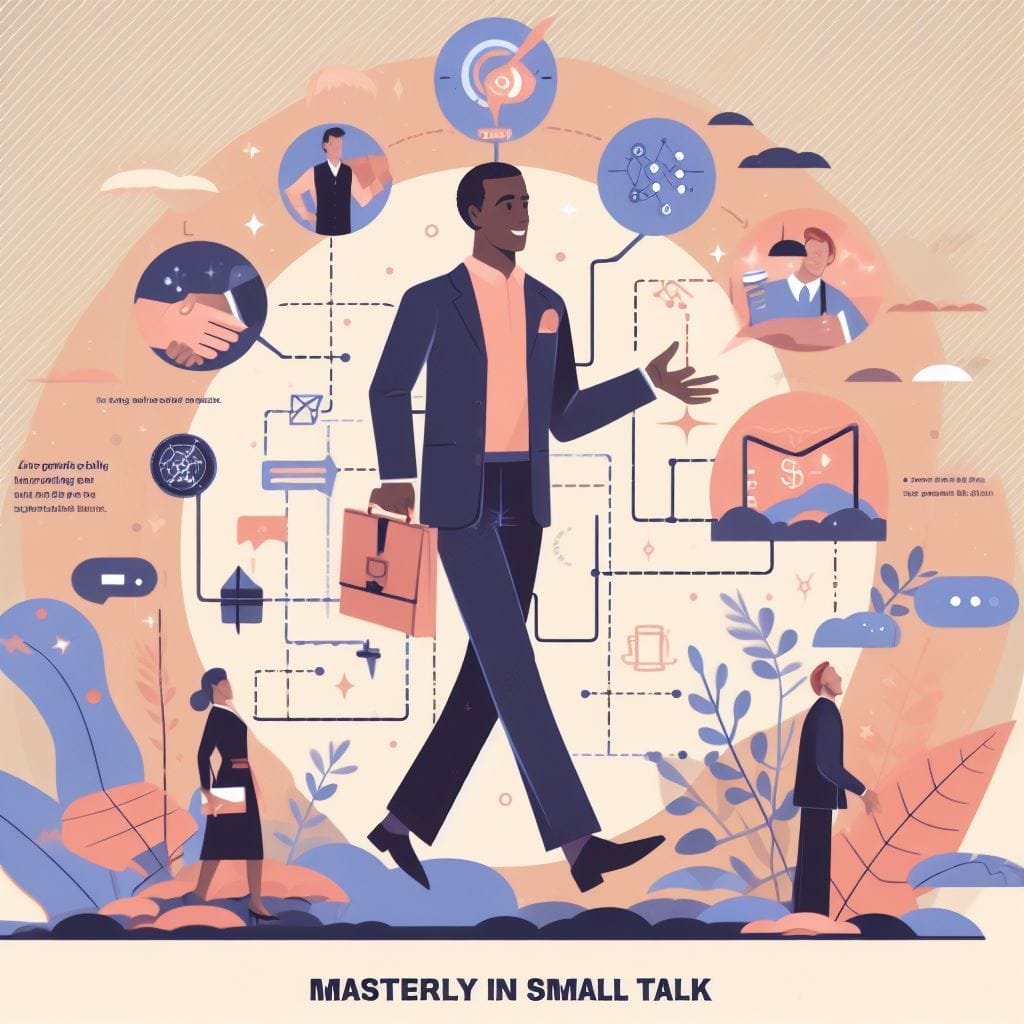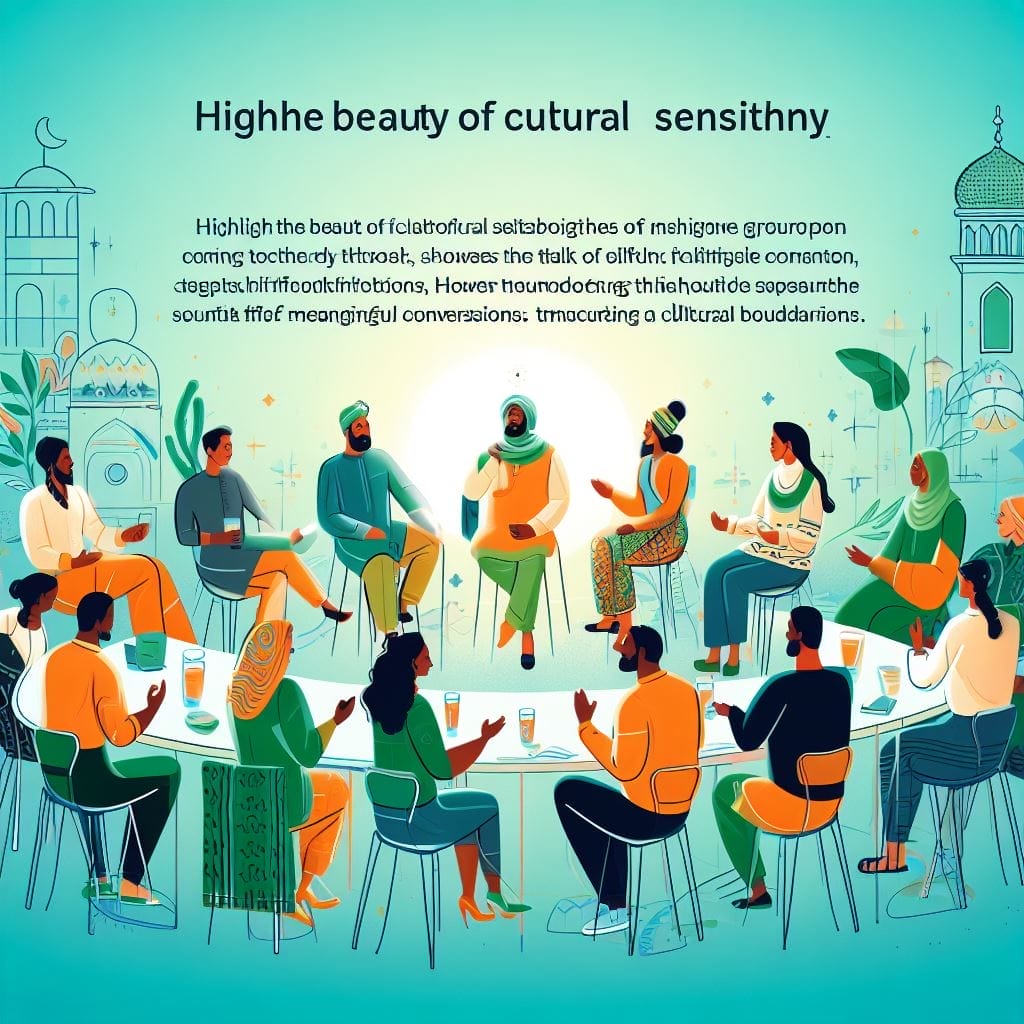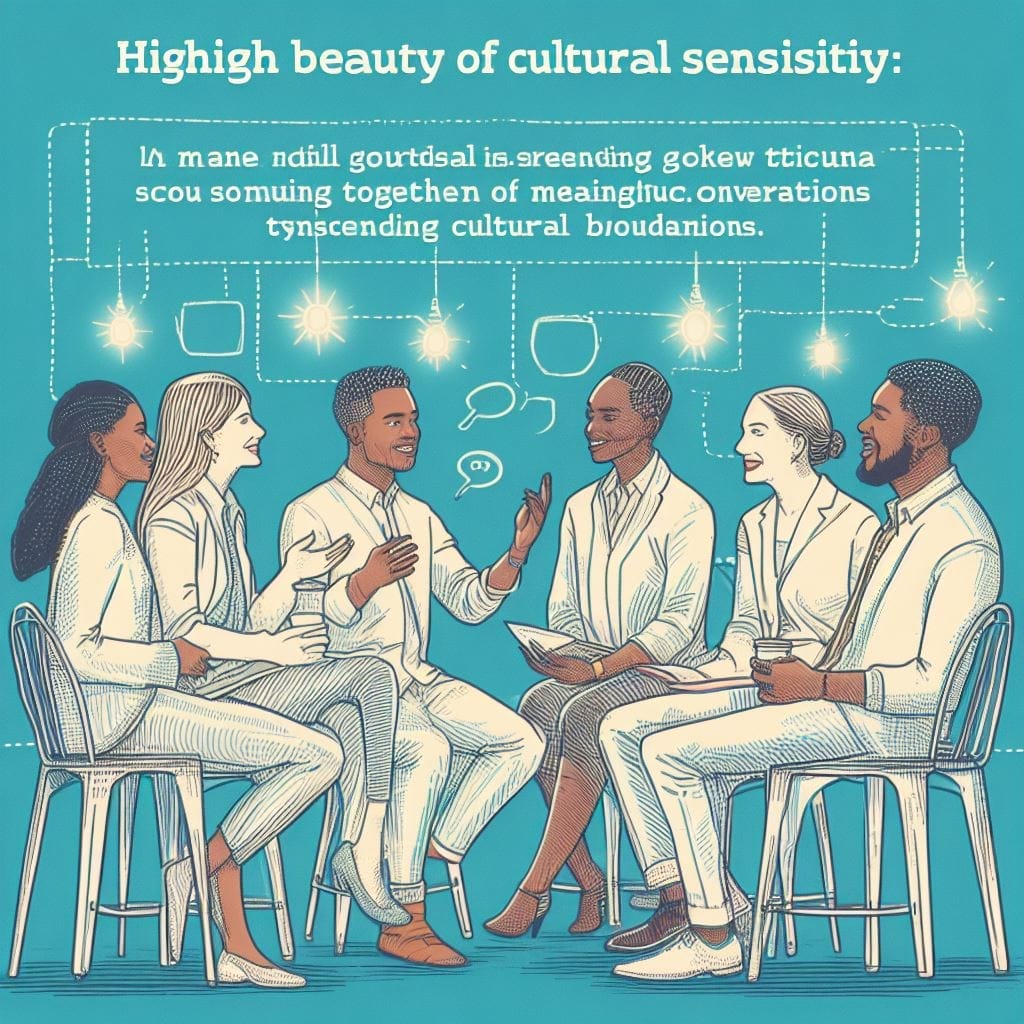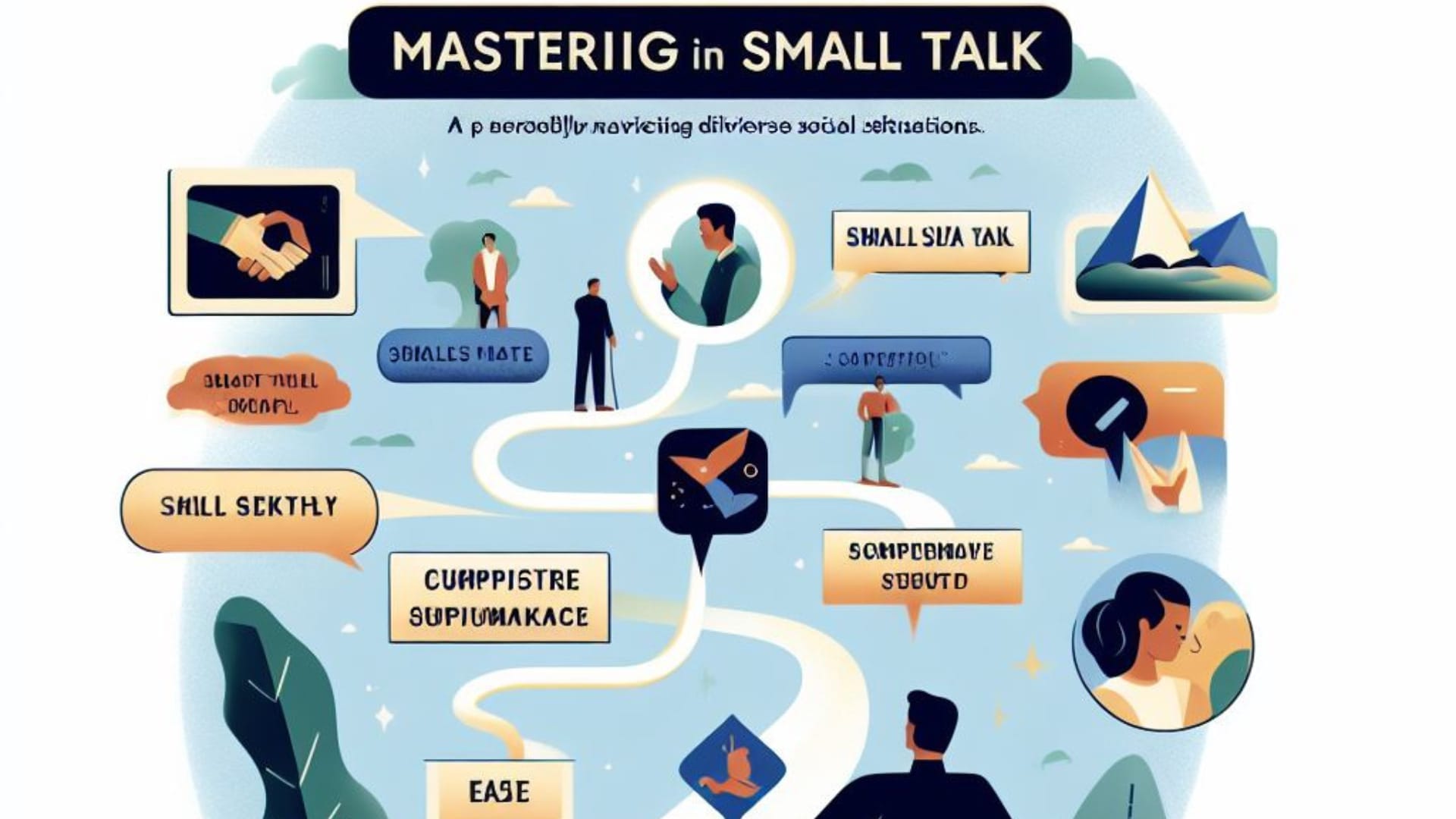Introduction
In the tremendous tapestry of social interactions, learning the delicate dance of small speak is the important thing to unlocking meaningful connections with strangers. Picture this: you find yourself in a room full of unusual faces, the air buzzing with the capability for new encounters. The artwork of small speak, frequently underestimated, is your passport to navigate these uncharted social waters. So today in this guide you will learn ‘How To Do Small Talk With Strangers.’
Small speak is the unsung hero, the bridge that spans the gap between the regarded and the unknown. It’s the diffused artwork of starting up a communication with a stranger, turning fleeting moments into memorable exchanges. Why does it matter? Because every meaningful connection starts with that first word, that initial step into the realm of casual dialogue.
Embarking on a conversation with someone new can be daunting, but fear not. This complete manual will resolve the mysteries of small speak, equipping you with the gear to triumph over initial discomfort and build connections that go beyond mere phrases.
So, are you organized to delve into the nuances of starting a conversation, exploring the intricacies of small talk, and mastering the artwork of speaking with strangers? Let’s embark on this adventure collectively.
Key Takeaways
- Learn to embrace a positive mindset, boost confidence through body language, and master the skill of active listening. Discover the keys to exuding confidence in any conversation.
- Uncover the secrets of finding common ground by choosing appropriate conversation starters and utilizing open-ended questions. Navigate cultural sensitivities with grace, celebrating diversity to forge deeper connections.
- Overcome communication barriers with strategies for clear verbal expression and understanding non-verbal cues. Actively listen to show genuine interest, creating a seamless flow in your interactions.
- Dive into the artwork of sharing personal anecdotes, expressing empathy, and building rapport. Leave a long-lasting impact by understanding the suitable time to gracefully exit conversations and specific gratitude.
- Practice small speech in expert settings, social gatherings, and normal situations. Master the nuances of talking in one-of-a-kind eventualities, making sure your newfound skills are adaptable and effective.
- Tackle anxiety and shyness head-on, the usage of small talk as a springboard for meaningful connections. Explore assets and sporting events for continuous improvement, fostering private and social growth.

Understanding the Basics of Small Talk
A. Defining Small Talk and its Purpose
Small talk, regularly disregarded but extraordinarily effective, is the social glue that binds individuals. It’s the art of conducting mild, casual conversations, laying the foundation for deeper connections.
B. Advantages of Striking Up a Conversation with Strangers
- Building Rapport: Small talk is the gateway to building rapport with strangers. It establishes a comfortable atmosphere, making interactions more enjoyable.
- Networking Opportunities: Engaging in small communication can open surprising doorways for professional and private growth. You by no means recognize where a simple verbal exchange might lead.
Getting Ready for Small Talk
A. Embracing a Positive Mindset
Approach small talk with positivity. It’s no longer just a manner to fill the silence; it’s a possibility to connect with others on a meaningful level.
B. Strategies to Boost Confidence
- Body Language and Eye Contact
- Maintain open body language to appear approachable.
- Establish eye contact to convey confidence and attentiveness.
- Truly listen to the other person, showing genuine interest.
- Use cues from their conversation to guide your responses.
Finding Common Ground
A. Choosing Appropriate Conversation Starters
Selecting the proper communication starter is an artwork. Consider the context, surroundings, and the person you’re enticing with.
B. Skill of Active Observation: Taking Note of Cues and Environment
Observation is fundamental. Be aware of your environment and the alternative individual’s non-verbal cues. It can guide the route of the communique.
C. Utilizing Open-ended Questions to Prompt Engaging Conversations
The magic lies in asking open-ended questions. They invite the other person to share more, creating a more dynamic and interesting dialogue.
Remember, mastering small talk is a skill that evolves with practice.
- Starting a conversation with strangers becomes an art when you can effortlessly make small talk.
- Utilize open-ended questions as your mystery weapon to keep the verbal exchange going.
- Whether you’re an introvert or an extrovert, these recommendations for starting a communique observe everyone.
- Break the ice with a casual communication starter, making the other person feel greater comfortable.
Handling Cultural Sensitivities in Casual Conversation
I. Sensitivity to Different Cultural Backgrounds
A. Embracing Diversity in Conversations
Navigating small communication throughout numerous cultural backgrounds calls for a nuanced technique. Celebrating range isn’t only a social nicety; it’s a basis for constructing connections. When starting conversations, bear in mind those techniques:
- Steer Clear of Sensitive Subjects: Begin conversations by way of averting topics that might be sensitive or debatable within positive cultures. This establishes a foundation of appreciation and openness.
- Celebrating Diversity and Shared Experiences: Embrace the richness of various cultures by way of locating common ground. Shared studies construct bridges and make conversations greater relatable.
Getting Past Communication Obstacles
A. Techniques for Powerful Verbal Exchange
Effective verbal conversation is the key to breaking down conversation limitations. When undertaking conversations with strangers or new acquaintances, bear in mind the subsequent:
- Speaking Clearly and Enunciating: Articulate your phrases absolutely, ensuring that your message is without difficulty understood. This is in particular vital when speaking with people whose first language may not be English.
- Asking for Clarification When Needed: Don’t hesitate to try to find an explanation in case you don’t completely recognize something. This not only effectively guarantees clear conversation but also demonstrates your authentic interest in the conversation.
B. Nonverbal Cues: Interpreting Expressions on the Face and Body
Non-verbal cues play a significant position in effective communique. Pay attention to subtle signals to beautify your understanding:
- Active Listening to Show Genuine Interest: Demonstrate your interest by actively being attentive to what the opposite man or woman is announcing. Nodding and maintaining eye touch carry engagement.
Table of Overcoming Communication Obstacles when Striding Up with New People
| Overcoming Communication Barriers in Small Talk with StrangersStrategies and Techniques | |
|---|---|
| 1. Build Common Ground | Find shared interests or experiences to establish a connection and create a more comfortable environment for conversation. |
| 2. Use Open-Ended Questions | Encourage more extended and meaningful responses by asking questions that require more than a simple “yes” or “no” answer. |
| 3. Active Listening | Demonstrate genuine interest by actively listening to the other person, responding appropriately, and showing that you value their input. |
| 4. Non-Verbal Cues | Pay attention to body language, gestures, and facial expressions to better understand the other person’s feelings and create a more open atmosphere. |
| 5. Be Mindful of Cultural Differences | Consider cultural nuances and sensitivities to avoid unintentional misunderstandings or discomfort when engaging with individuals from diverse backgrounds. |
| 6. Find Common Experiences | Identify shared experiences, such as being in the same location or attending the same event, to create a sense of camaraderie and ease initial awkwardness. |
| 7. Be Approachable and Friendly | Project a warm and approachable demeanor to make strangers feel more comfortable initiating and participating in small talk. |
| 8. Gauge Comfort Levels | Pay attention to cues that indicate the other person’s comfort level, adjusting the conversation pace and topics accordingly to ensure a positive interaction. |
| 9. Share Personal Stories | Appropriately share relevant personal anecdotes to add depth to the conversation and make it more engaging for both parties. |
| 10. Use Humor Judiciously | Introduce light humor to break the ice, but be mindful of the other person’s sense of humor and cultural context to avoid potential misunderstandings. |
| 11. Be Respectful and Courteous | Show respect by using polite language, avoiding controversial topics initially, and being mindful of personal boundaries during the conversation. |
| 12. Practice Empathy | Put yourself in the other person’s shoes, demonstrating understanding and empathy, which can foster a deeper connection and more meaningful conversation. |
| 13. Gradual Escalation of Topics | Start with lighter, neutral topics before gradually transitioning to more personal or in-depth subjects, allowing the relationship to develop organically. |
| 14. Use Mirroring Techniques | Mimic the other person’s body language and tone within appropriate bounds to create a sense of rapport and connection during the interaction. |
| 15. Be Patient and Persistent | Small talk with strangers may not always lead to immediate rapport. Be an affected person, and don’t be discouraged by using preliminary hesitancy; patience can pay off over time. |
These strategies goal to facilitate extra significant and comfortable interactions when initiating small talk with strangers, assisting in conquering unusual communication obstacles.

Engaging in Meaningful Small Talk
A. Building Lasting Connections Through Stories
Meaningful small talk goes beyond the superficial. Create a lasting impression by incorporating personal anecdotes and stories:
- Sharing Personal Anecdotes and Stories: Open up about your experiences, making the conversation more personal. This encourages others to share their stories, fostering a deeper connection.
- Expressing Empathy and Showing Genuine Interest: Empathy is the bridge to understanding. Show real hobby in others’ reports, acknowledging their emotions and views.
- Building Rapport: Establish a rapport by using finding not unusual hobbies. This creates a basis for future interactions and strengthens the bond.
B. Strategies for Effortless Dialog
Conversations with strangers may be daunting, however with the right strategies, everybody can end up a hold-close conversationalist:
- Ask Open-ended Questions: Encourage a loose-flowing communique with the resource of asking questions that require more than a clean sure or no solution.
- Follow-up Questions: Build at the initial topic by asking observe-up questions This shows genuine interest and keeps the conversation dynamic.
- Exit the Conversation Gracefully: Knowing whilst and the way to cease a verbal exchange is as essential as starting one. Exit gracefully by expressing gratitude for the interaction.
Exit Strategies and Wrapping Up Conversations
A. Knowing When to Gracefully Exit a Conversation
Navigating conversations with finesse requires the ability to parent the opportune second to gracefully bow out. Learning a way to begin a verbal exchange is vital, but equally crucial is spotting whilst it’s time to wrap it up. Consider cues which include non-verbal signals, subject matter exhaustion, or impending commitments to gauge the suitable exit point.
B. Expressing Gratitude and Appreciation
Expressing gratitude is an effective device in social dynamics. Acknowledge the cost of the conversation by way of truly thanking your conversation partner. A simple “It changed into brilliant speak with you” goes a protracted way in leaving a fantastic influence, making destiny interactions more likely.
C. Leaving the Door Open for Future Interactions
Closing a conversation doesn’t mean shutting the door entirely. Ensure a smooth exit by expressing your interest in future interactions. A subtle “I look forward to catching up again” maintains a friendly tone, leaving the possibility for future engagements wide open.
Practicing Small Talk in Various Settings
A. Small Talk at Networking Events and Professional Settings
Initiating small talk in professional settings requires finesse. Starting conversations with strangers can be intimidating, however, it’s a talent well worth getting to know. Begin with a confident introduction, perhaps commenting on the event or seeking common ground related to the profession.
B. Approaches for Small Talk in Social Gatherings and Parties
Social gatherings demand a different approach to small talk. Talking to strangers becomes an art of finding common interests. Initiating a conversation with a light-hearted comment or a shared experience from the event can break the ice effortlessly.
C. Small Talk in Everyday Situations
Mastering small talk in everyday situations, like waiting in line or using public transportation, involves being observant. Conversational cues are everywhere; it could be a book someone is reading or a piece of art in their bag. Use these cues to initiate light, pleasant conversations.
Overcoming Small Talk Challenges and Improving Social Skills
A. Dealing with Anxiety or Shyness
Building on small talk requires overcoming challenges like anxiety or shyness. Instead of focusing on potential awkwardness, shift your attention to the shared experience. Remember, everyone enjoys a pleasant conversation, and your genuine interest will likely be reciprocated.
B. Building on Small Talk to Establish Meaningful Connections
Small talk serves as the foundation for meaningful connections. Once the initial conversation is underway, look for opportunities to delve deeper. Resources and exercises for further practice can include reading relevant literature, participating in group activities, or seeking guidance from experienced communicators.
C. Resources and Exercises for Further Practice
To sharpen your social skills, consider resources and exercises tailored to your needs. Online courses, workshops, and books on effective communication can provide valuable insights. Practicing small talk in several settings is crucial to honing your skills and feeling more comfortable in numerous social scenarios.

My Self-Discovery Through Small Talk: A Personal Trip
In the mosaic of my social interactions, there was a time whilst the art of small talk eluded me. I determined myself to hesitate at the prospect of setting up conversations with strangers, grappling with the initial discomfort that often accompanies the unknown. It was a talent I knew I had to grasp, a key to unlocking the doors of meaningful connections.
The Turning Point: A Coffee Shop Encounter
One brisk morning, fueled by the aroma of freshly brewed coffee, I determined to undertake my small-talk inhibitions. As I stood in line, I noticed a fellow espresso enthusiast engrossed in an e-book I was currently examining. Armed with the newfound information from this complete guide, I seized the moment.
Identifying Points of Agreement:
I chose a conversation starter that aligned with our shared interest—the book. A simple, “I couldn’t help but notice you’re reading [Book Title]. How are you finding it so far?” opened the door to a delightful exchange.
Crafting Meaningful Small Talk:
As the verbal exchange spread out, I shared my reflections on the ebook and related non-public anecdotes. We seamlessly transitioned from discussing literature to exchanging testimonies about our favorite coffee blends and the hidden gemstones of the metropolis.
Exit Strategies and Gratitude:
Knowing when to gracefully exit became an art in itself. As our cups emptied, I gracefully expressed gratitude for the enjoyable conversation, leaving the door open for future encounters.
The Ripple Effect
That coffee shop encounter marked a turning point in my small talk journey. I realized that beneath the surface of casual dialogue lies the potential for profound connections. Since then, I’ve embraced the principles outlined in this guide, transforming small talk from a daunting task into a gateway to enriching interactions.
Your Turn to Shine
As I proportion this non-public story, I inspire you to embark on your small talk adventure. Whether it’s a threat stumble upon at a coffee shop or a networking event, consider that each verbal exchange is an opportunity to examine, connect, and develop. So, take that first step, observe the insights from this guide, and watch because the magic of meaningful connections unfolds for your existence. Happy talking! 🌟
FAQs: How To Do Small Talk With Strangers
What’s a foolproof way to start a conversation with strangers without feeling awkward, and how can a compliment play a role in breaking the ice?
When starting a conversation with anyone, consider the 7 ways you might ask a question to prompt good conversations. Begin the conversation with someone by starting with a positive attitude and incorporating a compliment to make them feel at ease—Gillian Sandstrom says this is an excellent approach.
Can you share effective ways to make small talk with strangers, emphasizing the importance of initiating the conversation and providing a compliment to keep it flowing seamlessly?
To master the art of small talk, focus on starting a conversation with someone using 7 ways that emphasize questions like “Do you like” or “love,” and you’ll get good conversations flowing. Making eye contact and asking a question, instead of making a statement, is an excellent approach according to Sandstrom. Share something like an article of clothing or ask about their favorite to make new connections outside of work.
How do you handle awkward moments for the duration of a communique with a person you simply met, and what are the nice methods to gracefully exit the communication without making it uncomfortable?
In dealing with awkward moments all through a conversation with a person you don’t understand, strive to ask questions like “you’re involved” or “they’d like.” When faced with an awkward silence, it’s an excellent approach to continue chatting by making a statement or asking another excellent question. If needed, gracefully exit the conversation by mentioning a prior engagement or expressing appreciation for the interaction.
What are some related articles that delve into the nuances of keeping the conversation going when talking to strangers, exploring different ways to start and maintain engaging dialogues?
To sustain interest in interactions with strangers, explore related articles that offer tips on keeping the conversation going. Questions like “What’s inside and outside your briefcase?” or “Share their name and sense of belonging” can be particularly useful. Sandstrom’s research suggests that asking about a person’s favorite outside of work can contribute to maintaining engaging dialogues and creating new professional relationships.
Can you offer insights into the psychology behind complimenting someone during a conversation with a stranger, and how this simple gesture can be a powerful tool in starting and maintaining meaningful interactions?
Offering insights into the psychology of giving compliments during a conversation with someone you don’t know, Sandstrom recommends asking questions like “Try asking about their new coworker” or “Ask the person next to you if they’d like another excellent approach.” By expressing genuine interest in people you don’t know, you can make them feel valued and create a sense of belonging, fostering great conversations and new connections in various social situations.
Conclusion
In this odyssey through the intricacies of small talk, you’ve unearthed the keys to unlock a world of meaningful connections with strangers. As we conclude this comprehensive guide, let’s reflect on the main points that will serve as your compass in mastering the subtle art of conversation:
- Confidence and Mindset: Cultivate a positive mindset and boost your confidence through attentive body language and active listening.
- Finding Common Ground: Sharpen your skills in choosing conversation starters, observing cues, and using open-ended questions for engaging dialogue.
- Cultural Sensitivity: Navigate diverse backgrounds with grace, celebrating shared experiences while avoiding sensitive topics.
- Communication Mastery: Polish verbal and non-verbal communication skills, ensuring clarity and genuine interest in every interaction.
- Crafting Meaningful Small Talk: Share stories, express empathy, and leave a lasting impression by building rapport effortlessly.
- Exit Strategies and Gratitude: Know when to gracefully exit, express gratitude, and leave the door open for future interactions.
- Practical Applications: Apply your newfound skills in various settings, from professional events to everyday encounters.
- Overcoming Challenges: Conquer social anxiety, turning challenges into opportunities for growth and connection.
Embrace the Journey Ahead
Now prepared with the equipment to navigate the sensitive dance of small talk, the world of meaningful connections awaits. As you step into the realm of social interactions, take into account that each verbal exchange is a possibility—a possibility to learn, to connect, and to enhance both your existence and the lives of those you come across.
The next thing you should do is practice.
Take the first step today. Put your newfound knowledge into practice. Strike up a communication with a stranger, discover the nuances of small talk, and watch because the magic unfolds. Remember, the greater you exercise, the greater herbal and handy small talk turns into.
In the words of Dale Carnegie, “You could make extra buddies in two months by turning into interested in other human beings than you can in two years through seeking to get different people inquisitive about you.” So, cross forth, engage, join, and master the artwork of small speak—an ability that will surely enrich the tapestry of your social existence.
Happy conversing! 🌟

Sarah Andrews’ work on relationships is informed by a breadth of experience and a strong interest in human nature. Sarah, who holds a Psychology degree and has a good eye for nuances, delves into the complexity of communication and emotion, delivering insightful insights for readers seeking personal growth and emotional pleasure. Sarah hopes that her empathic approach and insightful suggestions will motivate readers to understand themselves and their relationships better.
